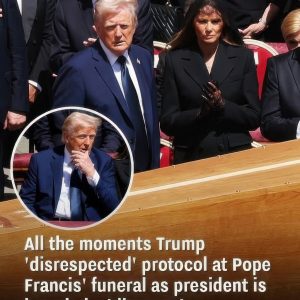A Pope Laid to Rest: Ceremony, Symbolism, and the Truth Behind the Myths
Before a pope is buried, centuries-old rituals unfold — steeped in tradition, reverence, and symbolism. Among them is one striking act: the defacing of the papal ring, a quiet but powerful gesture signaling that the pope’s authority has formally ended.
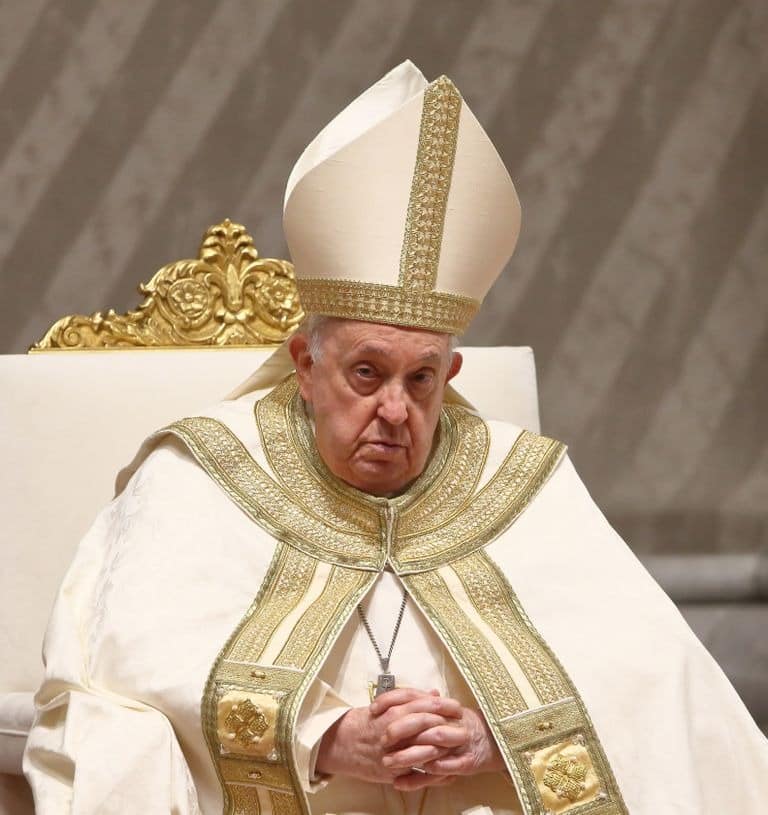
That moment came again this past weekend in the heart of Vatican City, as Pope Francis was laid to rest beneath the dome of St. Peter’s Basilica. At 88 years old, he passed away remembered not only for his calls to modernize the Catholic Church, but for his deep humility and unwavering care for the poor and the forgotten.
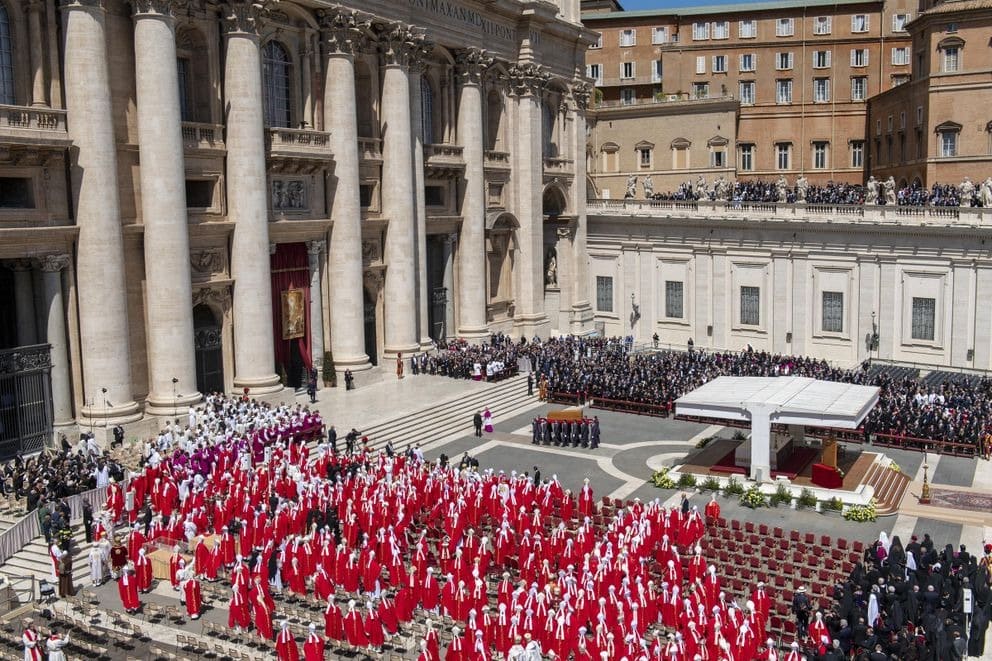
A Funeral Marked by Simplicity and Tradition
Pope Francis’ funeral brought together centuries of sacred ritual with the personal touches that defined his papacy. His body lay in state inside St. Peter’s Basilica for three days, clothed in white with red vestments — the traditional colors of papal mourning, symbolizing martyrdom and sacrifice. His unadorned oak coffin rested at floor level, a final gesture of humility from a pope who often turned away from luxury.
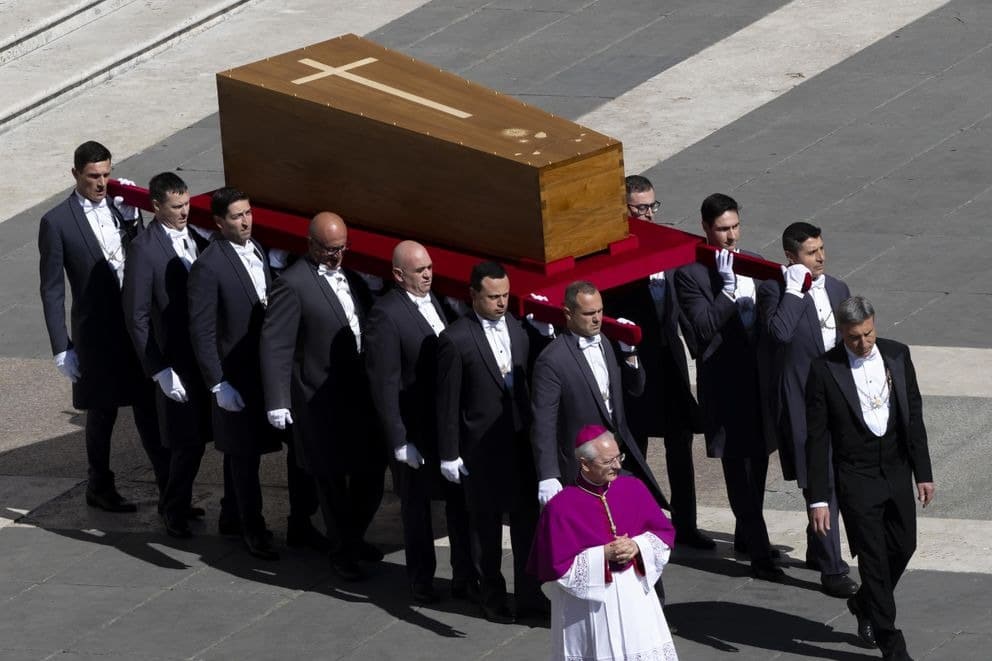
On Saturday morning, April 26, 2025, his funeral Mass took place outdoors in St. Peter’s Square. Hymns filled the air as his coffin was carried from the basilica, and a global audience watched with quiet reverence.
A Global Gathering in Vatican City
World leaders gathered in solemn tribute: former U.S. President Donald Trump and First Lady Melania Trump, French President Emmanuel Macron, Ukrainian President Volodymyr Zelenskyy, British Prime Minister Keir Starmer, Prince William, and many others stood shoulder to shoulder with thousands of mourners from across the globe.
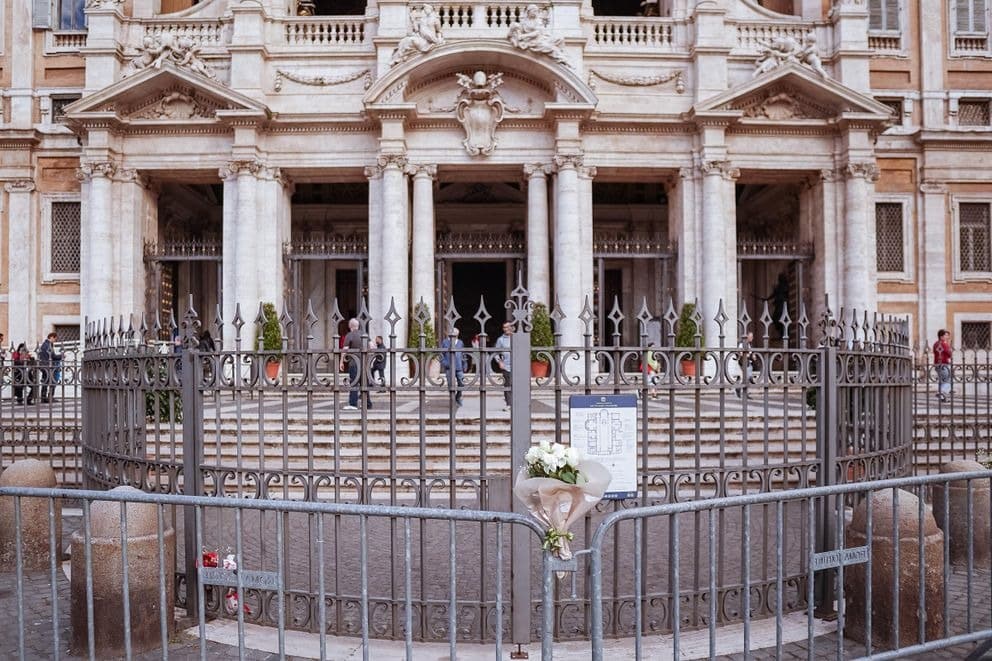
Amid the formality, moments of warmth broke through. Young pilgrims in town for a delayed canonization and a Holy Year celebration for teens smiled through tears. Some snapped photos — a small reminder that this pope, even in death, remained close to the people.
A Final Journey, A Personal Choice
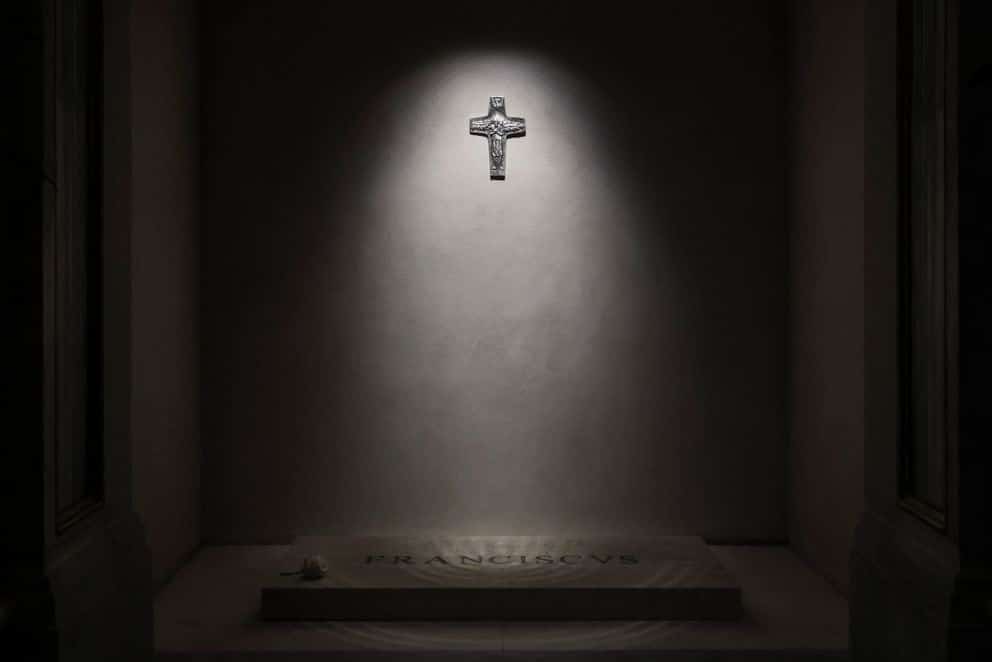
After the Mass, Pope Francis’ coffin traveled through the streets of Rome by motorcade to the Basilica of Santa Maria Maggiore — his chosen burial site. The pontiff had long held a deep devotion to the Byzantine icon of the Virgin Mary, Salus Populi Romani, housed in a side chapel of the church.
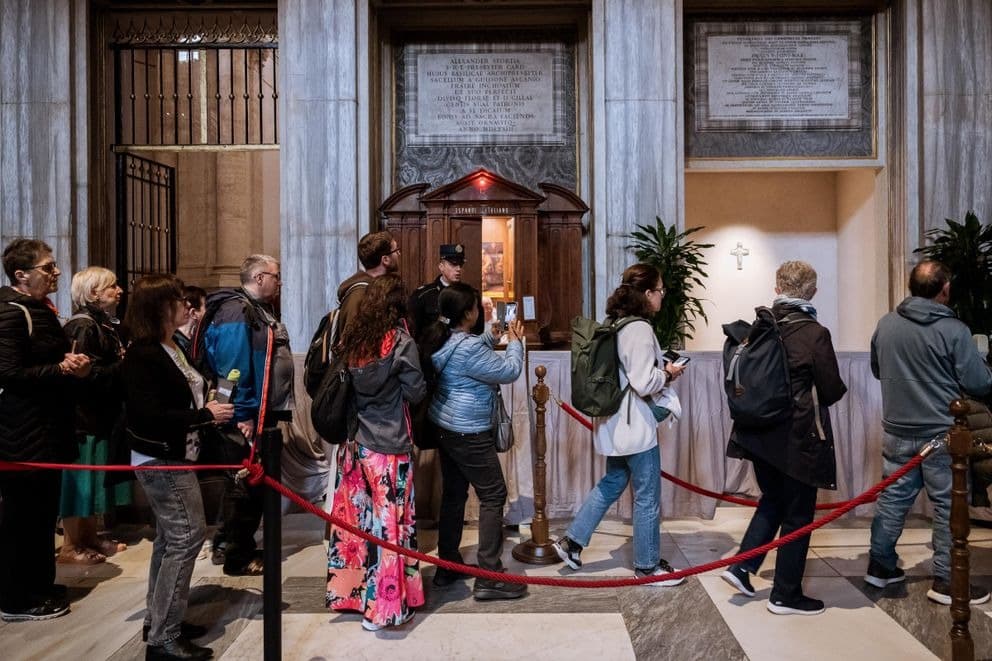
In keeping with his wishes, Francis declined burial in the traditional Vatican grottoes. Instead, his tomb was placed beside the statue of Mary, Queen of Peace, in a quiet aisle of the basilica — a peaceful, prayerful resting place away from the spotlight.
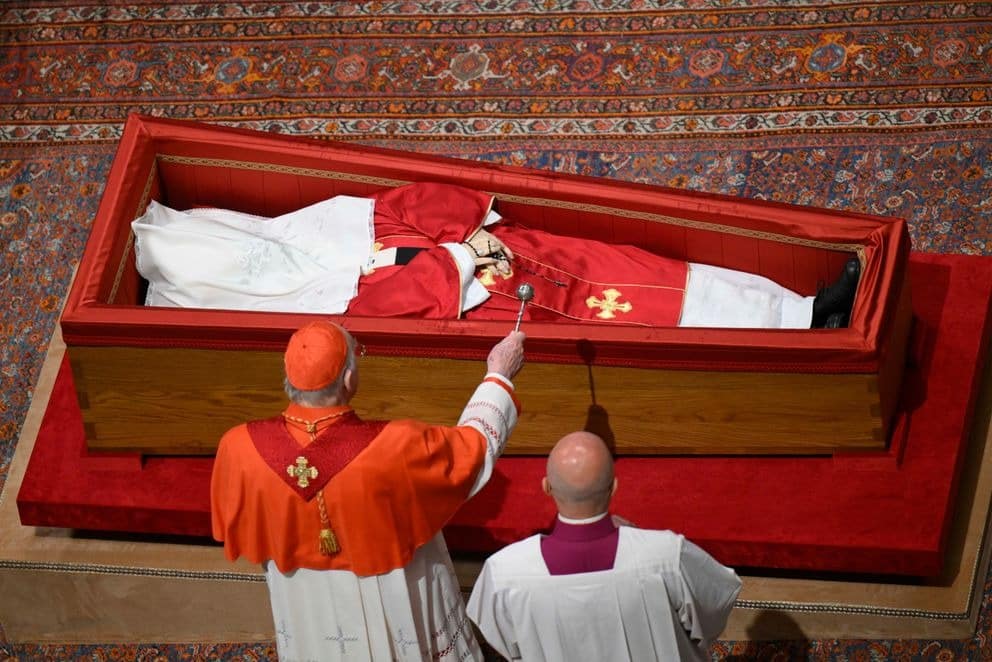
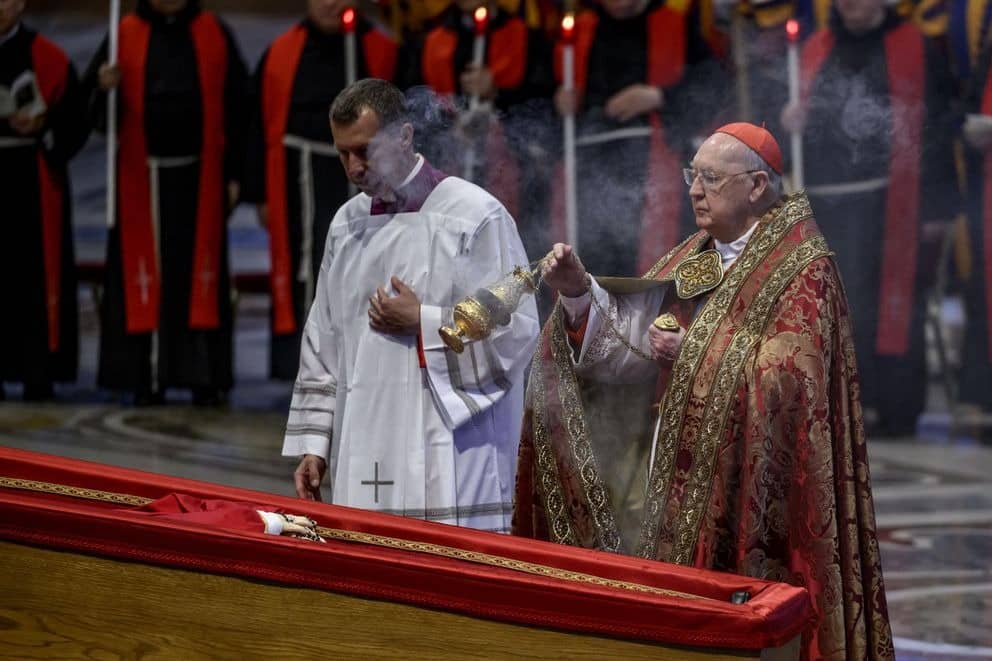
He also requested a simpler burial, opting out of the elaborate triple-coffin tradition used in previous papal funerals. Just as he lived, he left this world with humility.
The Truth About That Silver Hammer
As with any papal death, myths quickly began to swirl — one of the most persistent being the tale of the silver hammer. According to popular lore, a Vatican official known as the camerlengo gently taps the deceased pope’s forehead three times with a small silver hammer, calling his baptismal name to confirm death.
This story surged again in early 2023, when a viral social media post claimed the “dead-pope hammer” was in use once more.
But theologians and historians say otherwise. Professor Ulrich Lehner of the University of Notre Dame dismissed the tale as “an old myth not mentioned in any official Church text.” He believes it likely originated in the 1800s, when fears of premature burial ran high, and has endured ever since despite a lack of real evidence.
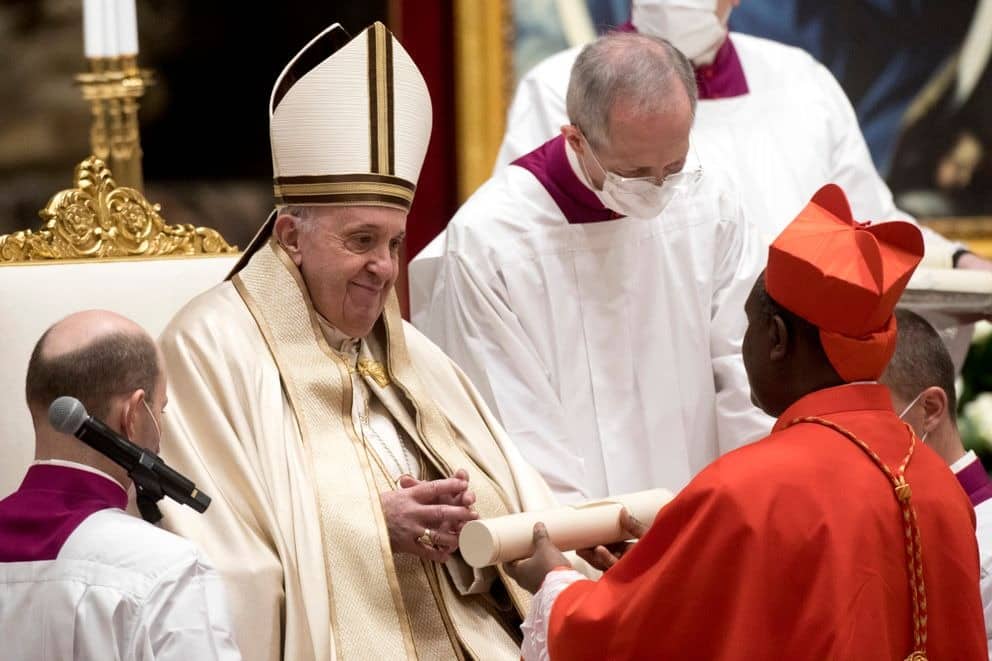
A Legacy of Compassion
Pope Francis will be remembered not for grand gestures, but for small ones. For choosing the name of a saint who lived in poverty. For visiting prisoners, washing the feet of migrants, and asking the world to care for “our common home.”
His final farewell echoed the themes of his papacy — humility, compassion, and service. And even as the rituals of mourning continue, so too does the conversation about what kind of Church — and what kind of world — he hoped to leave behind.
Inside the Final Days of Pope Francis: Ritual, Legacy, and the Truth Behind the Myths
As the Catholic Church bids farewell to a beloved pope, a centuries-old ritual unfolds — steeped in symbolism, reverence, and mystery. Among the most enduring traditions is the destruction of the Fisherman’s Ring — the ultimate symbol of papal authority — marking the end of a papacy and the beginning of the interregnum.
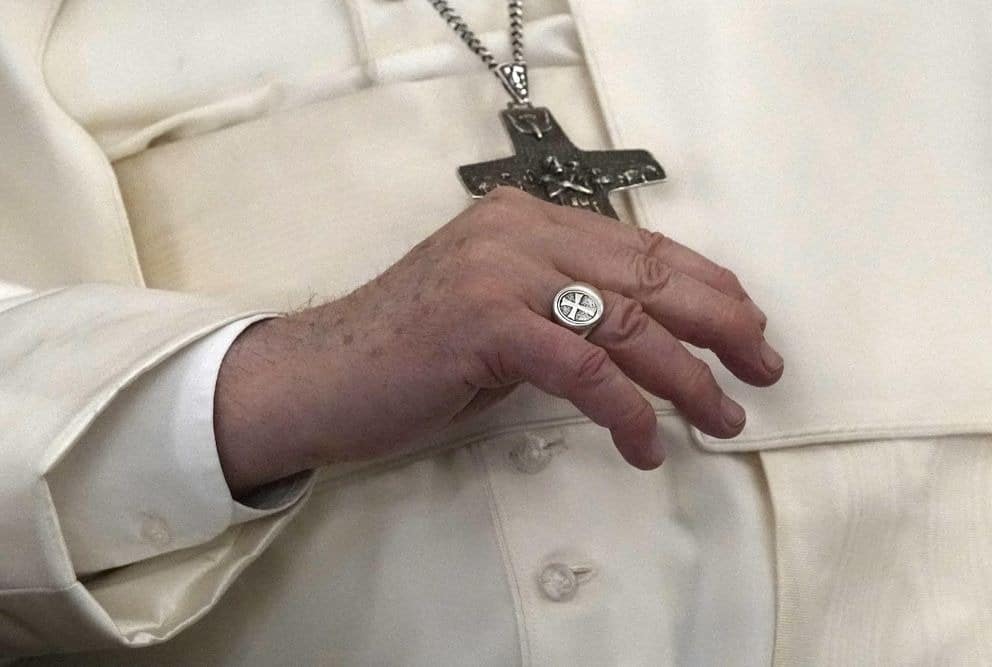
But not everything about a pope’s death is as ancient or dramatic as it seems.
The Myth of the Silver Hammer
One of the most persistent legends is that when a pope dies, a Vatican official — the camerlengo — taps the pope’s forehead three times with a silver hammer, calling his baptismal name to confirm his death. It’s a story that resurfaces with every papal passing — especially on social media.
But as Rev. David Collins, a professor at Georgetown University, explained, this dramatic ritual has no basis in Church law. “There is no reference to a silver hammer, the calling out of the pope’s baptismal name or the smashing of rings and seals in the document,” he said, referencing Universi Dominici Gregis, the official 1996 constitution governing papal transitions.
What the document does state is straightforward: once informed of a pope’s death, the camerlengo must officially verify it in the presence of Vatican officials and certify the event with a formal death certificate.
In the case of Pope Francis, the confirmation was done through modern medical means. “As with recent popes, doctors would be present to make the official declaration,” Rev. Collins said. “The camerlengo ensures it’s all done according to protocol.”
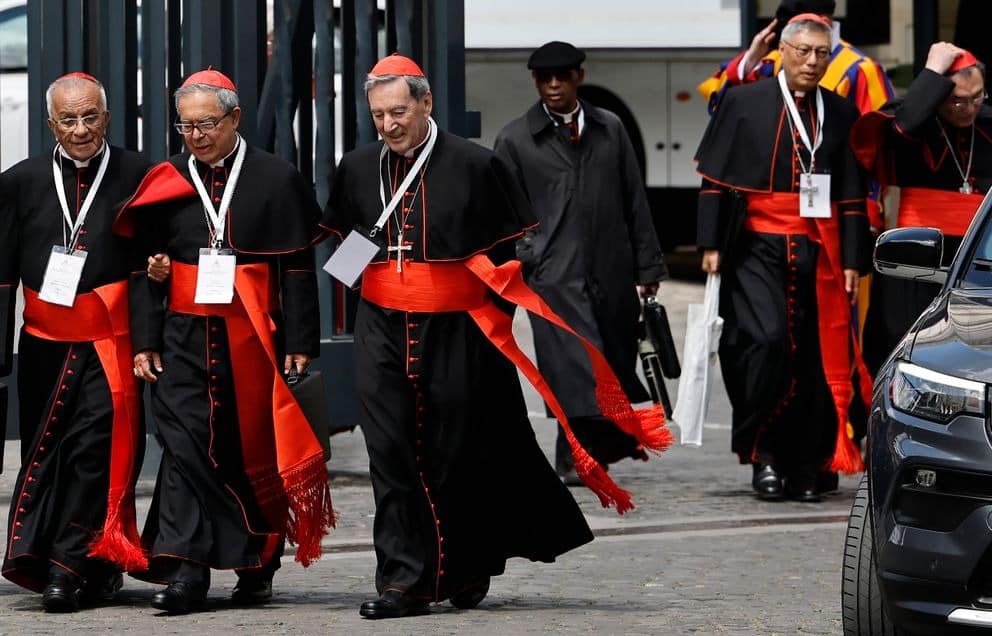
Cardinal Kevin Farrell’s Role in Pope Francis’ Final Rites
That protocol fell to Cardinal Kevin Farrell, the camerlengo, who followed each ceremonial duty precisely. After Francis’ death was confirmed, Farrell delivered the formal Latin declaration: “Vere, Franciscus mortuus est” — “Truly, Francis is dead.” He then secured the papal apartments, checked for a will, inventoried personal effects, and authorized the official paperwork.
Farrell also presided over the Rite of Sealing, a ceremonial moment inside St. Peter’s Basilica marking the closure of the pope’s coffin and the official start of the interregnum — the period when the seat of the papacy is vacant.
Why the Pope’s Ring Had to Be Destroyed
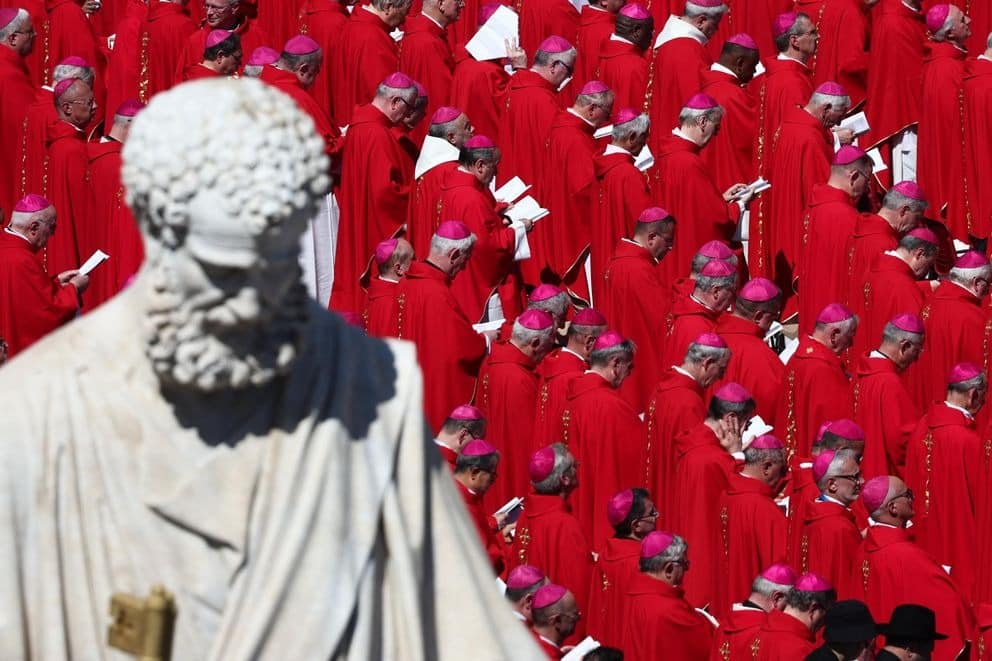
One of the most solemn duties following a pope’s death is the defacing of the Fisherman’s Ring — a gold seal traditionally used to authenticate documents. Since the 13th century, destroying it has served a critical purpose: preventing forgeries and signaling the absolute end of a papal reign.
CNN Vatican correspondent Christopher Lamb likened it to “taking the login details away from a social media account.” It’s a symbolic and practical reset — closing the chapter of one papacy before the next begins.
Historically, the ring was smashed with a ceremonial hammer. But continuing a precedent set during Pope Benedict XVI’s resignation, Cardinal Farrell simply scored a deep cross into the ring — preserving its integrity while ensuring it could no longer serve as a seal of authority.
Pope Francis had chosen a reused ring — a gold-plated silver piece that once belonged to Archbishop Pasquale Macchi, secretary to Pope Paul VI. It was a deliberate gesture, echoing his lifelong commitment to modesty and sustainability.
In daily life, Francis rarely wore the Fisherman’s Ring. He preferred a plain silver band from his time as Archbishop of Buenos Aires — a quiet expression of his belief that service mattered more than symbolism.
Choosing the Next Pope
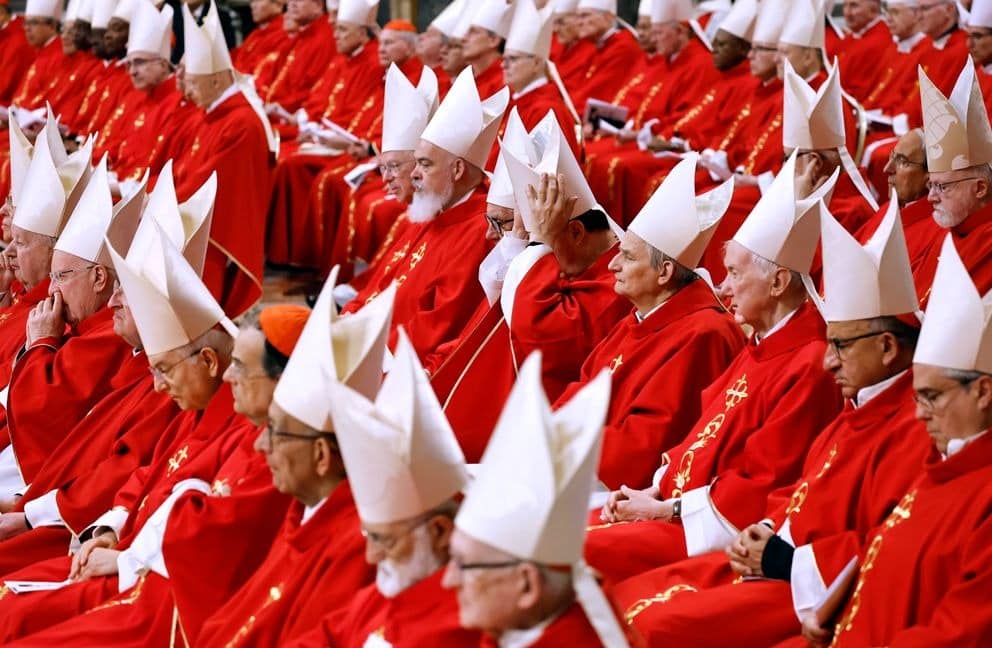
Following the funeral and ritual closures, the Church turned its attention to the conclave — the process of electing a new pope. As Church law dictates, the conclave must begin 15 to 20 days after the pope’s death. The Vatican later confirmed that the conclave will begin May 7.
This highly secretive gathering brings together 135 cardinal electors, most of whom were appointed by Pope Francis during his 12-year papacy. After celebrating Mass, the cardinals will walk into the Sistine Chapel, where the doors will close behind them — symbolically sealing them off from outside influence.
The voting process is meticulous: each cardinal writes his chosen name on a ballot, which is then counted, threaded, and burned. Black smoke means no decision. White smoke — accompanied by ringing bells — signals the election of a new pope.
Any baptized Catholic man is technically eligible to become pope, but since the 14th century, only cardinals have been elected. The chosen candidate must receive at least two-thirds of the vote from cardinals under age 80.
Once elected, the new pope accepts with the Latin word “Accepto” and chooses a new name. Then comes the moment heard around the world: “Habemus Papam” — “We have a pope.”
The Legacy of a Humble Pontiff
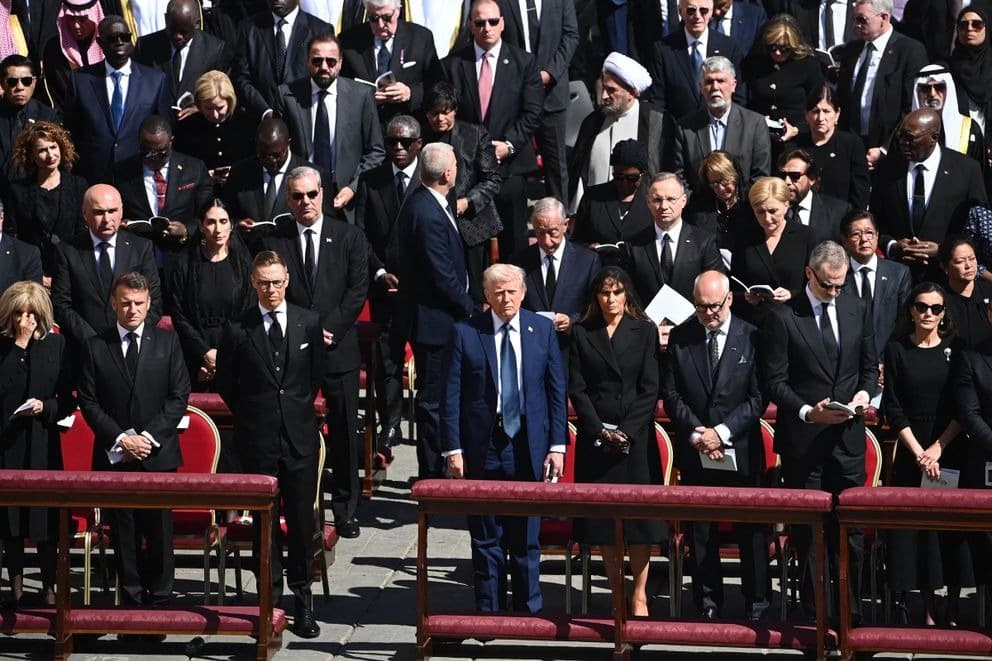
As the Church prepares for a new leader, it reflects on the legacy of Pope Francis — born Jorge Mario Bergoglio — and the vision he brought to the papacy. From his earliest days, Francis broke with tradition. He chose his name not to honor a predecessor or great theologian, but St. Francis of Assisi — the saint of humility, simplicity, and peace.
Cardinals reportedly joked about other name options — like Hadrian or Clement — but Bergoglio made it clear: he felt called to embody the spirit of St. Francis. “How I would love a Church that is poor and for the poor,” he once said.
That vision shaped everything — from his decision to live in a Vatican guesthouse instead of the Apostolic Palace, to his advocacy for migrants, climate action, and economic justice. Even in death, Francis chose simplicity: a wooden coffin, a modest grave, and pared-down funeral rites.
His final resting place, beside the statue of Mary, Queen of Peace, at the Basilica of Santa Maria Maggiore, reflects his devotion to the Virgin Mary and his desire for a quiet, prayerful end.
In life and in death, Pope Francis stayed true to his mission: to be a servant, not a ruler. His legacy — one of humility, compassion, and reform — will shape the Church for generations to come.
